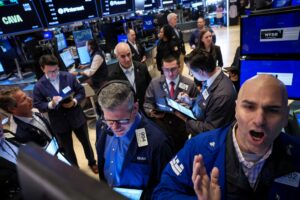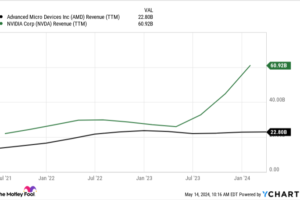
Pat Gelsinger doesn’t officially start his new job until Feb. 15, but the incoming Intel Corp. chief executive has already begun rallying the troops.
On Thursday’s fourth-quarter earnings conference call with Wall Street, Gelsinger sat in virtually with the CEO he is replacing, Bob Swan, and gave some glimpses of his strategy for the semiconductor giant and its current manufacturing issues. The general rallying cry: We are going to do things the Intel way.
Read also: Can Intel’s boy wonder pull a Steve Jobs?
The most important announcement was the one the chip world had been anxiously anticipating: Intel’s INTC, +6.46% manufacturing plans. As many had been predicting, given Gelsinger’s previous tenure at the company, Intel will stick with what it has always known by keeping most of its manufacturing in-house. Intel will continue to outsource some products to contract manufacturers like Taiwan Semiconductor Manufacturing Corp. TSM, +2.69% of Taiwan, but how much and which products is still a mystery.
“We will continue to leverage the relationships we’ve developed over the years with our external foundry partners, and believe they can play a larger role in our product road map given our disaggregated designs,” Swan told analysts. “Once Pat has had a chance to join, he’ll further assess our analysis and drive the final manufacturing decision for our 2023 CPU products.”
In his brief comments, Gelsinger said that he analyzed the company’s newest data last week on its 7-nanometer manufacturing node, the latest to suffer a delay. Since the company’s news in July of a delay in this next-generation process, Intel engineers have worked to streamline and simplify the process, he said, and the data indicates improving trends.
“I’m looking at data that’s been thoroughly analyzed, trends over the last six months that clearly is bringing them to a point of greater confidence,” Gelsinger said, when asked by Bernstein Research analyst Stacy Rasgon why investors should accept that 7-nanometer is now really on track. “I looked at that data, I came to the same decisions.”
These comments by Gelsinger, who previously had spent 30 years at Intel in a variety of positions, including as its first chief technology officer, will be important for employees and investors, who may have more confidence in his opinion, as opposed to his predecessor, who initially joined the company as its chief financial officer. That confidence in Gelsinger and his engineering cred will also help to woo back some former rock-star engineers to the Santa Clara, Calif., chip giant.
Gelsinger, who is wrapping up his tenure as CEO of VMware Inc. VMW, +1.07% before officially joining Intel, said he is working on bringing back and hiring some great engineers. He pointed to the return of Intel Senior Fellow Glenn Hinton, who said he would be coming out of retirement to rejoin the company, where he was the architect of one of Intel’s important core chips, and holds over 90 patents.
“You’ll be seeing other announcements of key leaders coming back,” Gelsinger said.
No return will be more consequential, no matter the result, than Gelsinger’s. He said Thursday that returning to Intel meant taking on his “dream job,” even though Intel is in a bit of a nightmare position — struggling as rivals like Advanced Micro Devices Inc. AMD, +3.13% and Nvidia Corp. NVDA, +3.75% hit a new stride.
“It won’t be easy, but the new CEO should support a renewed focus on engineering internally and also enable the company to attract talent externally,” said C.J. Muse, an analyst at Evercore ISI, in a note to clients.
Unlike Swan, Gelsinger can also pull from his own history at Intel for an inspirational story to show that such times can be overcome.
“Personally I was very involved in the period where we were very diminished in the marketplace and late to the multi-core, and in that period of time, in 2005 to 2009, we turned around the company and unquestionably established the leadership position after a period where many were questioning the ability of the company to be successful, yet again,” Gelsinger said. “Great companies are able to come back from periods of difficulty and challenge and they come back stronger, better and more capable than ever… I’m confident that this company has its best days in front of it and I am looking forward to the opportunity to be part of that.”
That confidence came from the decades Gelsinger spent at Intel, and his rousing lesson from it should serve him well moving forward. It’s clearly going to be a slow, uphill road for Intel to get out of the hole it has fallen into, but Gelsinger sounds ready for the challenge.
















Add Comment